How Long Does PVC Glue Take to Dry?
Author: Omar Alonso | Editor: Omar Alonso
Review & Research: Jen Worst & Chris Miller
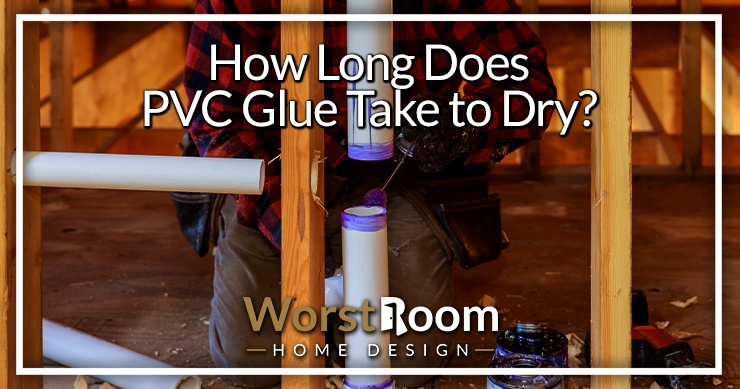
When working with PVC pipes, one crucial question that often arises is how long does PVC glue take to dry? The answer depends on several factors, but generally speaking, it takes approximately two hours for PVC glue to dry.
Let’s look at the types of PVC glue available and the proper application process to ensure successful repairs using PVC glue.
What Is PVC Glue?
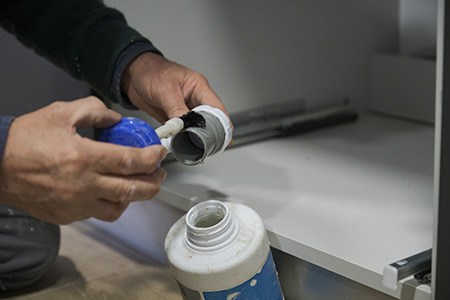
PVC glue is a chemical compound used to melt two PVC surfaces together, forming a single chemical bond that can only be separated through cutting.
Due to their specifically designed bonding agents and curing process, PVC types of glue is more suitable for PVC pipes and fittings in home repair projects because it is tailored explicitly for this type of material.
Factors Affecting PVC Glue Dry Time
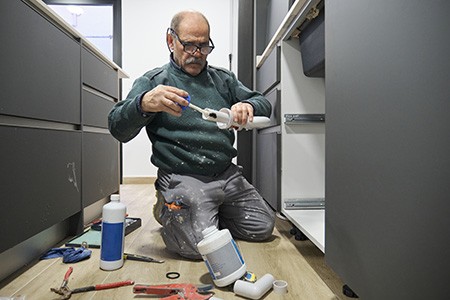
PVC drying time depends on several factors, including temperature, humidity levels, and the type of product used. It takes approximately 15 minutes before you’ll be able to handle the glued piece, and you should allow at least two hours for full curing.
Temperature
Temperature plays a significant role in determining how long to let PVC glue dry. The curing process is faster at higher temperatures since the solvent evaporates more quickly. Ideally, you should work with PVC cement in an environment where temperatures range from 60 °F to 100 °F. If you're working outside this range, expect your drying time to be longer than usual.
Humidity
High humidity levels slow the evaporation rate of solvents in the adhesive mixture. Consequently, it will take longer for your glued joints to cure properly when working under humid conditions.
Types of PVC Adhesives
There are several types of PVC adhesives, including solvent cement, Gorilla Glue, and a hot glue gun, that all affect the answer to the question of how long does PVC glue take to dry.
Solvent Cement
Solvent cement is an adhesive that creates a chemical bond by dissolving and fusing two plastic surfaces like polyvinyl chloride (PVC) pipes and fittings.
Gorilla Glue
Gorilla Glue is known for its strong bonding capabilities across various materials such as wood and metal. While Gorilla Glue works well with chlorinated polyvinyl chloride (CPVC) pipes, it may not be suitable for all PVC applications.
Hot Glue Gun
While hot glue guns are typically used in crafting projects, you can also use them for small-scale PVC repairs. However, remember that the bond created by a hot glue gun is generally weaker than that of solvent cement or specialized adhesives explicitly designed for PVC materials.
Proper Application of PVC Glue
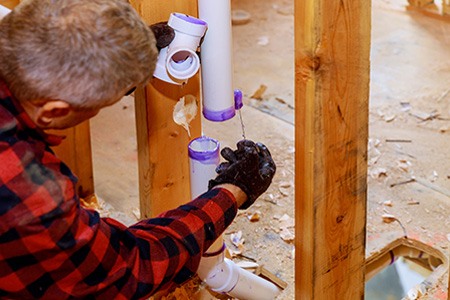
To ensure a strong PVC bond, following the proper steps for PVC glue application is important.
Safety Precautions During Application
When working with PVC glue, you should always wear safety goggles and protective gloves to avoid contact with your eyes or skin. In addition, keep children and pets away from the work area as these bonding agents can be harmful if ingested or come into contact with sensitive areas.
Importance of Ventilation While Working With Solvents
PVC glues contain volatile organic compounds (VOCs) that evaporate quickly once exposed to air. These fumes can cause dizziness, headaches, nausea, and other health issues if inhaled for an extended period. To minimize exposure risks while applying PVC glue:
- Work in a well-ventilated area, such as outdoors or near open windows/doors.
- If necessary, use fans to help circulate fresh air throughout space and disperse solvent vapors more effectively.
- Avoid breathing directly over adhesive containers; hold them at arm's length whenever possible during use/application processes.
Applying Primer & Cement Correctly
To achieve a strong bond between two pieces of PVC piping or fittings:
- Clean both surfaces thoroughly by removing any dirt/debris on their exterior layers using a dry cloth or paper towel.
- Smooth any burrs off the edges with sandpaper before applying primer and cement. This step helps ensure a secure connection between the two pieces, diminishing the likelihood of any leakage.
- Apply PVC primer to both surfaces by brushing it in thin, even layers. Allow approximately thirty seconds for the solvent to evaporate and soften plastic materials before proceeding further - this step helps create stronger bonds overall during subsequent gluing processes.
- Quickly apply an even layer of PVC cement within about ten seconds after priming both surfaces. Use a brush applicator provided with most adhesive products and ensure all areas are covered thoroughly without leaving any visible gaps/voids where possible.
It is important to understand the proper application of PVC glue to ensure a strong bond and minimize potential risks.
Speeding Up the Drying Process
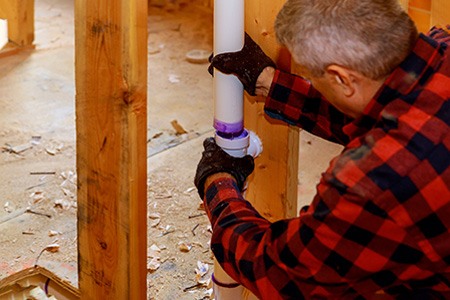
So, how long does PVC glue take to dry if we get involved with trying to manipulate the process? In extremely cold temperatures or high humidity conditions where you need faster results from your adhesive bonding efforts, a few techniques can help speed up the drying process of PVC glue.
Using Heat Sources Effectively
Applying heat to the area can be beneficial to accelerate the drying time of PVC glue. However, caution is crucial when introducing any type of heat source near flammable materials like solvent cement. Some safe options for speeding up evaporation rates overall include:
- Utilizing a hairdryer on a low setting directed at the glued joint.
- Placing an electric heater nearby but not too close to avoid overheating or melting plastic components.
- If working outdoors during colder months, consider shielding your work area with tarps or blankets and using portable heaters to maintain warmer temperatures around your project site.
Injecting Adhesive Technique
An alternative method for speeding up PVC glue drying time is injecting adhesive into joint gaps via a syringe, allowing for quicker penetration through plastic layers and more solvent evaporation than traditional brush application methods. To successfully implement this technique:
- Clean both surfaces thoroughly before applying primer as usual.
- Determine which type of needle best suits your specific project needs (e.g., smaller gauge needles for tight spaces).
- Select an appropriate syringe size based on how much cement will be required per connection point - larger volumes may necessitate multiple injections.
- Fill the syringe with PVC glue, ensuring no air bubbles are present.
- Insert the needle into the joint gap and slowly inject adhesive while gradually withdrawing it to ensure even distribution throughout all layers of plastic material.
It's important to use these techniques judiciously, as their effectiveness can vary. It's essential to follow manufacturer recommendations for drying times whenever possible and allow adequate time for proper curing before subjecting glued joints to pressure or stress tests. In some cases, patience is key to achieving a strong bond between your PVC pipes and fittings.
PSI Levels & Temperature Resistance
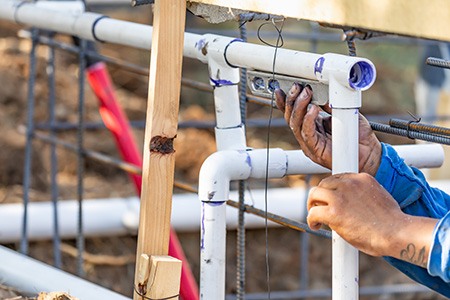
PVC glue is known for its ability to withstand extreme temperature fluctuations and hold PSI levels up to 5000 when fully cured. It is ideal for various applications, including plumbing systems and craft projects requiring a strong bond between plastic parts.
Importance of Proper PVC Glue Cure Time
To achieve the maximum strength and durability of PVC glue bonds, it's crucial to allow adequate curing time before subjecting the joint to pressure or stress. Rushing this process can result in weaker connections that may fail under load or exposure to harsh conditions.
Tips for Ensuring Proper PVC Glue Curing:
- Avoid applying excessive force or pressure on newly glued joints during the initial curing period, no matter if it's a high or low pressure application.
- Keep the bonded area clean and free from dirt or debris that could interfere with proper adhesion.
- If possible, store your project in a controlled environment with consistent temperatures and low humidity levels while waiting for the adhesive to cure completely.
So, How Long Does PVC Glue Take to Dry?
PVC glue is an effective adhesive for many home repair projects. The curing time for PVC adhesive may depend on the kind of glue and environmental conditions like heat and humidity, but after application, it takes approximately two hours for the cement to cure.
Always remember the importance of following safety protocols when using a volatile organic compound and follow the package instructions, making sure to use the product within three years of the expiration date indicated, or the question of how long does PVC glue take to dry won't even matter.



